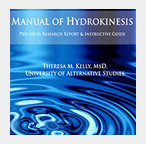Hydrokinesis
Parapsychology Articles, Papers and Books
Home > Articles > Psychic Phenomena > Psychokinesis > Hydrokinesis
![]()
|
| NEWSLETTERS |
| Get the best from QPsychics.com in your inbox! |
|
| PARAPSYCHOLOGY ORGANIZATIONS |
"With confidence in the importance of utilizing the investigative mode of the established sciences in order to inquire into the authenticity and to potentially explain the nature of psychical phenomena."  |
 |
 |
 |
 |
Motion vs. Inertial Forces
Hydrokinesis is defined as the psychokinetic ability to influence the flow of liquids via either mental influence or an experients own natural electric or electromagnetic fields, primarily in the hands. Reports regarding the influence of liquids in a static state are equal to that of reports regarding the influence of liquids in motion. However, reports suggest experients may be limited to the influence of one state or the other. Experients in which have a high success rate of influencing the flow of static liquids, liquids at rest, often report the inability to influence the direction of flow successfully once the liquid is put into motion. In addition, experients in which report the ability to influence the direction of flow, tend to report the inability to influence liquids in which are not already in motion. This suggests that some experients of hydrokinetic phenomena may be more subject to inertial forces, whereby limiting some experients to the influence of, or inability to influence, liquids in stable equilibrium. Experients can identify if they have limitations of this nature by implementing flow based and static based exercises into their routine. Exercises in regards to static influence tend to involve a medium sized, short, round container with a slightly less than equal volume of liquid, typically water. Exercises pertaining to the influence of flow however range from large sized, short, rectangular containers with a device to create continuous turbulence for horizontal flow exercises, and water streams, typically from a water tap, for vertical flow exercises. Water is the most common liquid used in either regard.
(Adapted from the paper "Manual of Hydrokinesis: Applications, Experimentation, and Measurement” by Theresa M. Kelly, MsD.)
| |||
Related Articles |
|||

